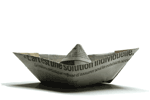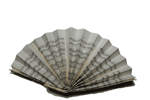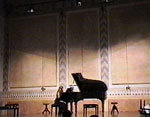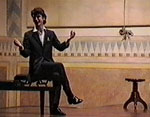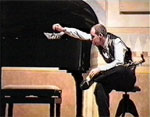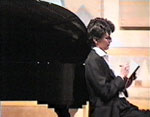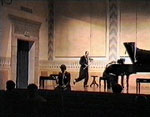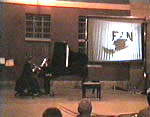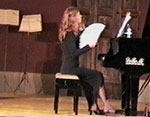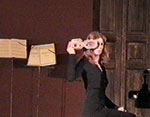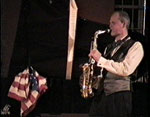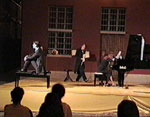|
text and direction by Mara Cantoni
Lorena Portalupi, piano
Sandro Cerino, alto sax, bass clarinet, flute
and with Filippo Usellini
music by Claude Debussy, George Gershwin, Darius Milhaud,
Francis Poulenc, Erik Satie, Germaine Tailleferre
Entr'acte, film by Francis Picabia e René Clair (1924)
"What is preferable? Art that struggles to change social balances but fails? Or art which aims only to please and entertain and actually reaches its goals?" (Robert Hughes, The Shock of the New).
The years between the two great wars were swept by the strong wind of the avant-garde, which overturned pre-existent codes and impressed expressive languages with the most important signs of the century. With the following differences, generally speaking: the German side (and middle- and eastern-European) feeds on contrasts and tormented interrogatives, tending to choose clear ideological sides, while the French one dives into this adventure of the new with the lightest of hearts, with the idea that art for art's sake, even when not aligned ideologically, is subversive per se.
Our performance-concert delves into the news-reports and the cultural climate of Paris in the 1920's. Debussy still lingers in the air when Les Six go off in the opposite direction: derision of Decadentism, simplicity in composition, aperture to "popular" genres and to interaction with other art forms. The group has two special characters behind it: Erik Satie, rigorous and riotous, solitary to the point of being snob, and Jean Cocteau, untiring stimulator and insolent protagonist of the Parisian scene. In the background, but often in the foreground, Cubism, Dadaism, and Surrealism meet and clash, not without scandal. Moreover, everything is shocking and exciting: dances and kilometres per hour, the movies and relativity, fashion and psychoanalysis, sport, Martinis, easy money and jazz. America is already here, although the French don't quite know it yet. While many of the artists and intellectuals of the time carry on controversies through adhesions and denials and mundane scandals, well distributed in literary reviews and salons and under the lustful eyes of the old "good society", a new bourgeoisie is devouring everything the Market imposes with complacent and blind enthusiasm, be it a restaurant or a book cover, and soon becoming its prisoner.
In a surrealist film weapons, funerals, death itself are just an illusionist game, as is the new-born art of film. History is meanwhile preparing real armaments and deaths. Peace is something too delicate, too precious to make it an intermezzo between two wars. "What is preferable?…" Brecht would say: "Don't expect any answer but your own." |
